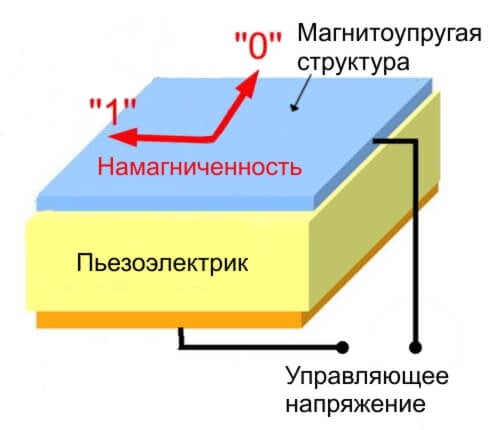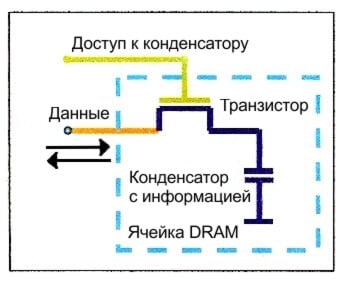- Get link
- X
- Other Apps

Today it is difficult to find an electronic device that would not have RAM. Almost all features of software operation are tied to its use. Although there is a "RAM" and a significant drawback - an extremely high power consumption. According to an article published in Applied Physics Letters, a team of specialists from MIPT, together with colleagues from the IRE them. V. A. Kotelnikov of the Russian Academy of Sciences and the LIA LICS International Laboratory managed to develop a completely new type of memory. The approach of scientists will help not only to reduce energy consumption, but also significantly speed up the operation of devices.
A “classic” RAM (RAM) cell consists of a transistor that regulates capacitor access. The capacitor can be charged, and then its value is 1, or discharged and its value, respectively, will be 0. The developed magnetic-electric memory (MELRAM) consists of two elements: a piezoelectric substrate and a special layered structure. Piezoelectric elements can be deformed if a voltage is applied to them, or create it if they are deformed. The layered structure has a strong magnetoelasticity (the magnetic properties in it change along with the deformation). Due to the anisotropy of the layered structure, the magnetization can have two directions, which correspond to logical 1 or 0. At the same time, the MELRAM memory (unlike the RAM currently used) is able to maintain its state even when disconnected from the network. Sergei Nikitov, head of research, head of specialization at the Department of Solid-State Electronics, Radiophysics and Applied Information Technologies of the Moscow Institute of Physics and Technology, and his colleague Anton Churbanov, a post-graduate student of the Faculty of Physical Education and Technology,
“The RAM industry is very highly developed today, the speeds of the modules are becoming faster, but there is a significant drawback that, due to the design of modern memory, cannot be overcome, - low energy efficiency. In our work, we demonstrate a magneto-electric memory cell. It will reduce the energy costs of writing and reading tens of thousands of times. We created a sample about a millimeter in size and demonstrated its work. It is important to note that on the basis of the structures used, nanometer cells can be created that are similar in size to those used in conventional RAM. ”


When voltage is applied to the MELRAM memory cell, the piezoelectric substrate is deformed, and, depending on the nature of the deformation, the magnetization changes direction and information is recorded. However, if the direction of the magnetic field changes, then some additional voltage arises in the sample, which can be registered, thereby recognizing the state. Since the direction of magnetization may change when reading, it is necessary to rewrite the read value in this cell again.
Based on the materials of the press service of MIPT
The article is based on materials .
- Get link
- X
- Other Apps
Comments
Post a Comment